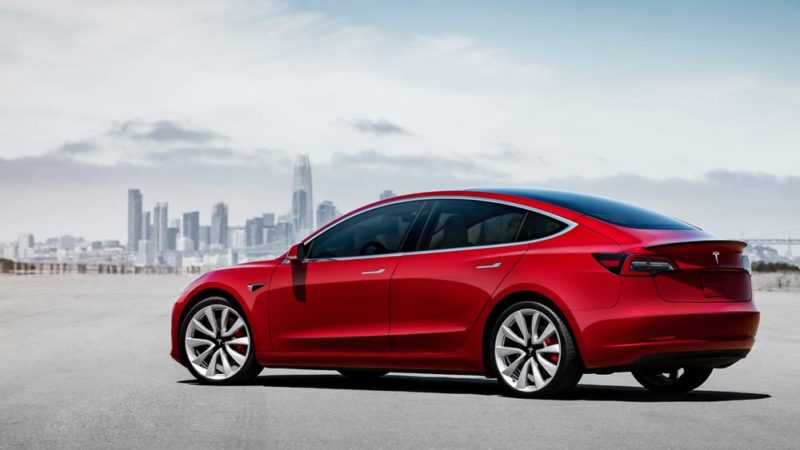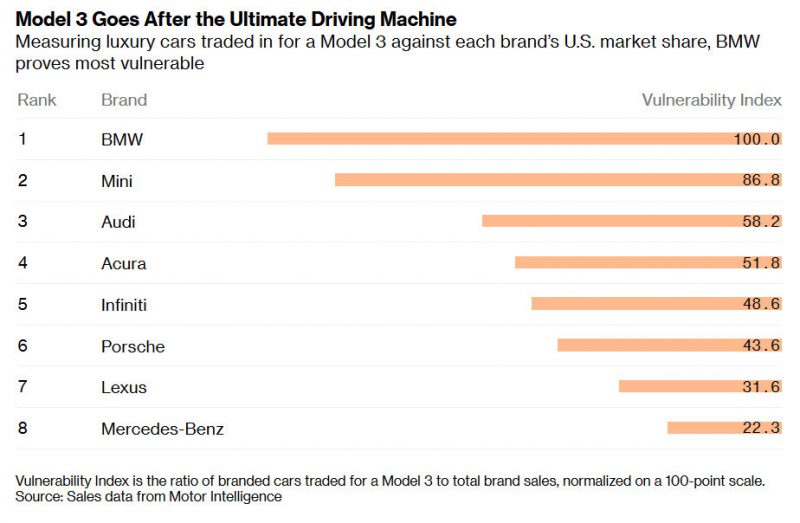Consumers ditch BMW, Toyota, Honda and Prius to buy Tesla Model 3

It has been known for some time that Tesla had made a considerable dent in the US market with its Model 3 sedan, becoming the best-selling vehicle in the entire US premium segment again in Q2 2019 and outselling all its petrol and diesel competitors combined.
But now new data revealed by Bloomberg shows exactly what chunk the Model 3 is taking away from its competitors – and the results are surprising.
According to data gathered from 5,000 Model 3 owners, a wide range of models accounted for vehicles previously owned by new Model 3 owners.
Most drivers have made the switch to the Model 3 which sells at an average of $US50,528 ($A73,822 converted) from much cheaper economy models, with the Honda Accord and Civic together taking the biggest hit.
The hybrid Toyota Prius, as well as other Toyota models including the ever popular Camry and Corolla, also lost a relatively large slice of its fanbase with 7.5% of switchers accounting for these models alone.

It is however the switch over from vehicles in the premium segment that is the most telling, as luxury car drivers give up high quality (and mostly European) vehicles in favour of the Tesla Model 3, with BMW taking the biggest hit by far, starting with the 3 series, followed by the 5 series, the i3 and to a lesser extent, the 4 series, the Mini Cooper and the X1, X3 and X5.
The impact of the Model 3 on BMW drivers is perhaps summed up in this comment from one survey respondent who said, “I’ve owned three BMW 3 Series and was a diehard BMW fan. The Tesla blows those cars away.”
Data showing just how vulnerable BMW and other premium segments are to the penetration of the Model 3 has been converted by Bloomberg in what it calls a “Vulnerability Index”.
According to the index, which has been normalised on a 100 point scale, it is BMW and its subsidiary Mini which are most at risk of losing out to Tesla, with fellow German carmaker Mercedes-Benz the least at risk.

I have so many features now that I didn’t have when I bought the car a year ago. Normally, at about a year, year-and-a-half of ownership I’m already scouting out the freeways for what looks good, and I find that I don’t do that with the Model 3,” the Model 3 owner said.
All Tesla vehicles have the ability to improve over time via “over-the-air” updates, and it is not just by adding improved driver assist features such as Smart Summon (which we must note is only available to those who have purchased the Full Self-Driving package).
This is a sentiment that is not accidental; as Tesla CEO and co-founder Elon Musk put it during Tesla’s Q3 earnings call in October, “The goal for infotainment system is what’s most amount of fun you can have in a car? I don’t think other car companies think about it that way.”
“How can we maximise how enjoyable the car is? Not just as some sort of transport or utility device…but as something that you love.”

Bridie Schmidt is lead reporter for The Driven, sister site of Renew Economy.
She specialises in writing about new technology, and has a keen
interest in the role that zero emissions transport has to play in
sustainability.
Check out our Models pages for news and analysis, reviews and road trips on this and all EV models currently or soon to be available in Australia.
No comments:
Post a Comment